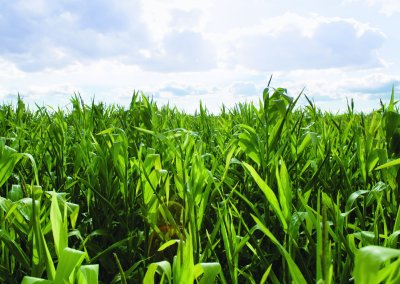Mike Hawman is standing at the edge of his plowed field, hollering distance from the Columbia River, and pulls a calculator out of his breast pocket. His beefy farmer’s fingers stab at the tiny keys and a smile spreads across his face.
HERMISTON — Mike Hawman is standing at the edge of his plowed field, hollering distance from the Columbia River, and pulls a calculator out of his breast pocket. His beefy farmer’s fingers stab at the tiny keys and a smile spreads across his face.
“$150 a ton,” he announces, having made the conversion from bushels to tons. It’s what he’ll get for the field corn he’s planting this year — a crop he didn’t even bother with in 2006 because it wouldn’t have made his family farming operation any money.
“Last year it didn’t pencil,” Hawman says. “This year, we’re planting the max.”
Demand for corn for ethanol has put record numbers of field corn seeds in the ground this growing season — nationwide the U.S. Department of Agriculture pegs it at just over 90 million acres, up 15% over last year and the most since World War II.
The corn rush is prompting the biggest shift seen in agriculture for decades — and it’s not all good news.
Rising corn prices, inching past $4 a bushel up from around $2 last season, are having an updraft effect on the other major commodities: wheat, cotton and soybeans. Vegetables such as peas and sweet corn are harder to come by as growers are planting more field corn to take advantage of higher prices. And the corn being sold to ethanol plants is pushing up the price of the corn bought for feed.
But as consumers brace for higher grocery prices, many growers are experiencing a rare burst of optimism.
Even though Oregon isn’t considered a corn state, growers in the irrigated Columbia Basin consistently get the world’s highest corn yields, much to the chagrin of their brethren in Iowa. At U.S. Corn Growers Association conventions, Oregon growers are like sports stars, with other farmers reciting their per-acre yields, more than 300 bushels per acre in some cases, like batting averages.
“This land, it doesn’t look like much, but there’s no one else who can compete with us in yields,” says Phil Hamm, supervisor of Oregon State University’s Hermiston Agriculture Research and Extension Center. Hamm says the basin’s soil, light intensity, long growing season and the irrigation water pulled from the Columbia work together with warm days and cool nights to create prime growing conditions for many crops, including corn.
Having already locked in the price he’s going to get for the corn he planted the last week in April, Hawman says he’s ready to start buying “iron” — tractors and other gear, purchases he’s put off in leaner years.
Bruce Ford, who farms his in-laws’ land on the other side of Hermiston from Hawman, says he’s been planting field corn since 1986. “I can count on one hand the times corn has been above $125 a ton,” says Ford, who has locked in a $155/ton price for the 530 acres he planted this year.
Ford explains that some farmers will lock in a price early, while others will play the market and hope the price will spike even higher. “People get greedy, but my banker thinks I’m a hero,” he says.
But even Ford is getting pinched by the field-corn frenzy. In addition to pushing up the price for other crops, the sudden demand for corn has also goosed the price of fertilizer. Ford figures he’ll pay about 25% more for fertilizer this year for a total of $150,000. He says he was also lucky to have bought his seed early because his seed salesman was sold out of field corn seed well before fields were plowed.
Brent Searle, deputy director of the Oregon Department of Agriculture, says early numbers show the uptick in field corn planting is negligible at 55,000 acres, up from 51,000 acres planted last year. But the lure of corn has been blamed for a statewide hay shortage as some growers forsake alfalfa for field corn. And vegetable processors are having a tough time finding farmers who will sign a contract to grow crops such as sweet corn and peas instead of field corn.
“It’s a real issue,” says Dave Stoddard, sales manager for Smith Frozen Foods in Pendleton. Stoddard says the company will be down 18% to 20% in the vegetables it will process this year, a shortfall that translates directly to the bottom line.
Smith is paying more for sweet corn and peas, but the company still doesn’t have the acres under contract it needs to have a full-capacity processing season. “There aren’t enough acres to go around,” Stoddard says.
Katie Fast, associate director of governmental affairs for the Oregon Farm Bureau, says it’s a mixed bag for Oregon. On the one hand, growers of wheat and grass seed are benefiting from the higher prices their crops are able to fetch, thanks to the ripple effect of ethanol demand. Meanwhile, the bureau’s livestock sector is struggling with higher feed prices. “This is coming on top of high energy prices,” Fast says, “and our concern is that the farmers are absorbing the cost.”
— Christina Williams
Have an opinion? E-mail [email protected]


